Africa's split is due to tectonic activity in the Great Rift Valley that will eventually divide the continent and create a new, sixth ocean.
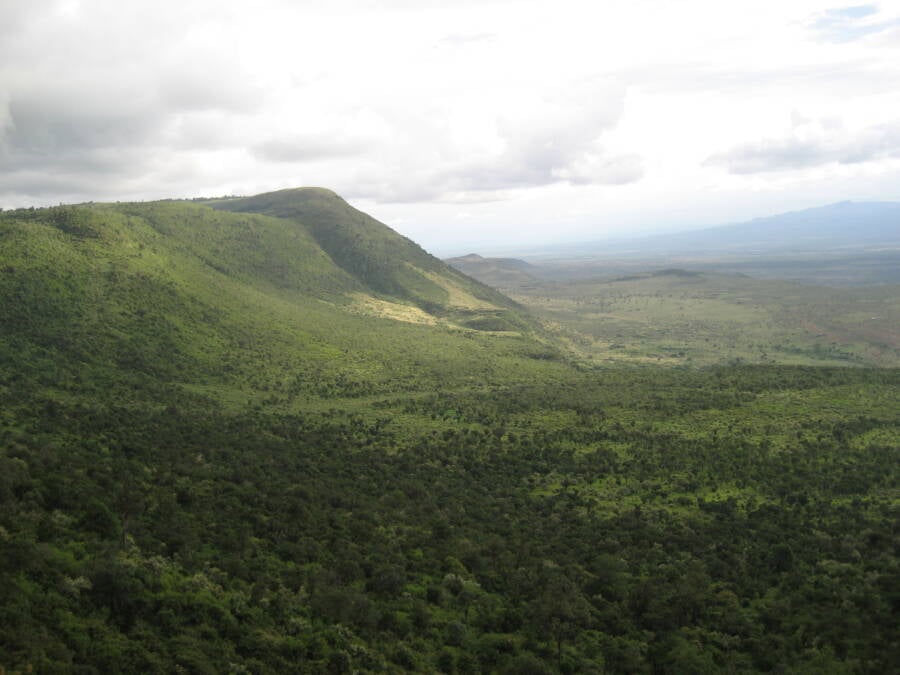
Wikimedia CommonsThe Great Rift Valley, a series of contiguous geographic depressions associated with the East African Rift.
Earth has seven continents: Asia, Africa, North America, South America, Antarctica, Europe, and Australia. At this moment in history, that is fact, but it wasn’t always the case. Hundreds of millions of years ago, there was only a single supercontinent known as Pangea. And millions of years in the future, there may be a new continent — because Africa is splitting.
Indeed, scientists have known for the past two decades that Africa is gradually splitting apart. The first crack appeared in 2005 after an earthquake struck Ethiopia. This 35-mile-long fissure has continued to widen at a rate of half an inch per year — but below the surface lies an even greater divide.
The small fissure is linked to the 22-million-year-old, 4,000-mile-long East African Rift System, which extends from Jordan to Mozambique. It could one day become so deep that it splits the continent, creating a new ocean.
So what is going on with Africa splitting? Read on to learn how the split began and developed — and how it may change the face of the Earth.
The First Sign Of Africa Splitting In Ethiopia
In 2005, a significant geological event unfolded in Ethiopia’s Afar region, where a series of earthquakes culminated in the formation of a massive fissure approximately 35 miles long and roughly 20 feet wide in certain areas. The rift emerged over a span of just a few days, with geologists quickly suggesting it could one day spawn a new ocean.
According to a 2009 Live Science report, the event was initiated by an eruption at the Dabbahu volcano, located at the northern end of the rift.
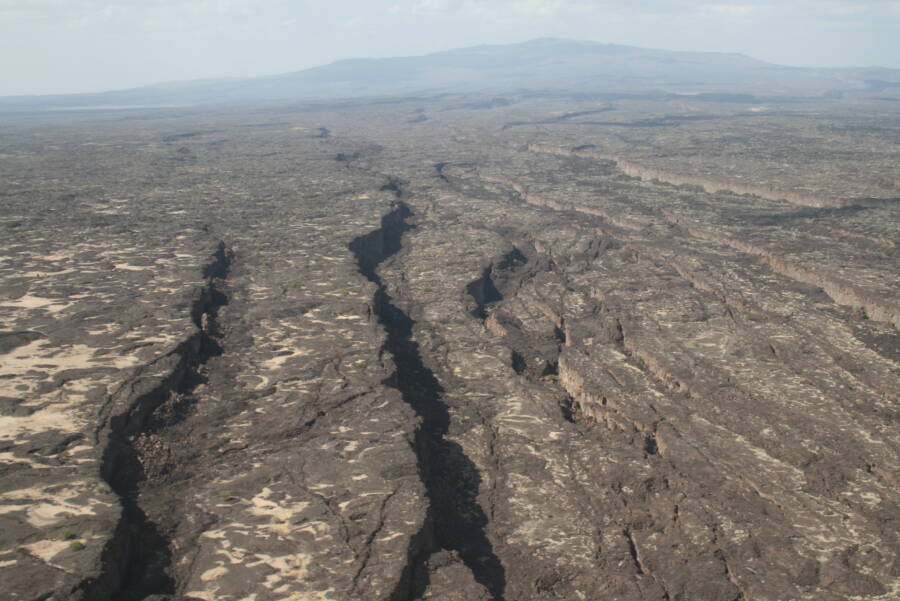
DavidMPyle/Wikimedia CommonsRifts extending from the Dabbahu volcano, seen in the foreground.
This volcanic activity triggered a series of seismic events that moved in both directions, causing the ground fracture. Magma from the mantle ascended to fill these newly formed gaps, a process that mirrors the mechanisms occurring along mid-ocean ridges where new oceanic crust is generated.
“We know that seafloor ridges are created by a similar intrusion of magma into a rift, but we never knew that a huge length of the ridge could break open at once like this,” said Cindy Ebinger, professor of earth and environmental sciences at the University of Rochester who co-authored a study examining the rift, explained to Live Science.
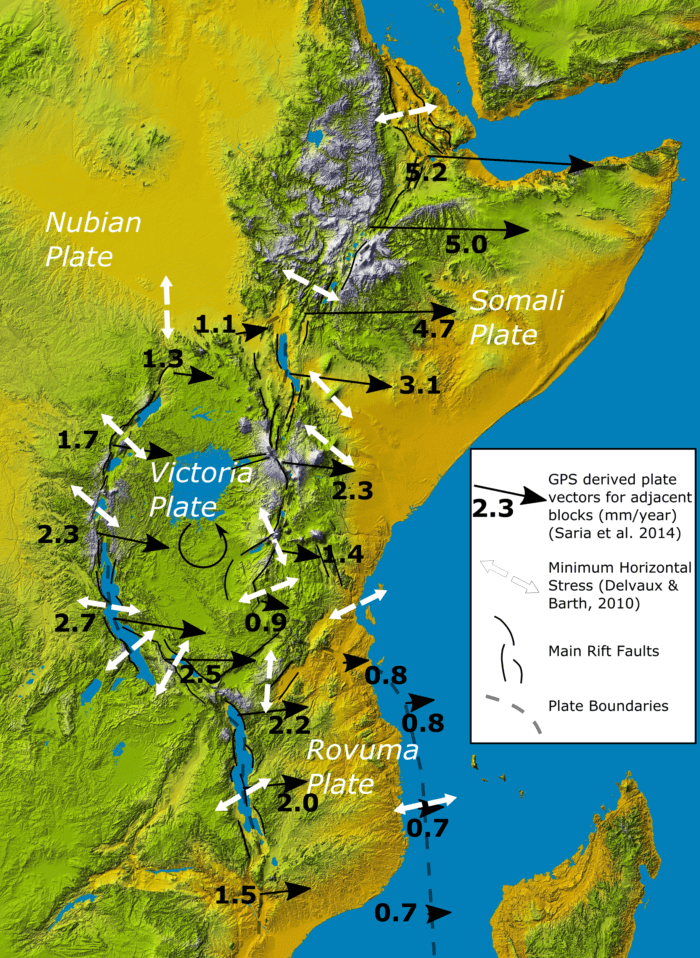
Wikimedia CommonsA map highlighting the main faults along the East African Rift.
The original purpose of the study was to determine whether what happened along the East African Rift was similar to what was happening on the ocean floor — and their ultimate conclusion was: yes. However, there was an even more fascinating aspect to this rift across Africa.
Indeed, it soon became clear that the rift was expanding. It wasn’t by much — less than one inch per year — but now that expansion was visible on Earth’s surface. The African and Arabian tectonic plates had actually been drifting apart at this rate for roughly 30 million years up until then, but now that it had reached the Earth’s crust, it raised new questions. Was Africa splitting apart? What would that mean for the continent?
Then, in 2018, more cracks began to appear.
A Second Crack Forms In 2018 — But It May Not Be Connected To The East African Rift
In March 2018, a second massive crack, measuring approximately 50 feet deep and 65 feet wide, suddenly appeared in Kenya’s Rift Valley near the town of Mai Mahiu, west of Nairobi. It caused substantial damage to the Narok-Nairobi highway and led to the partial evacuation of the Suswa area.
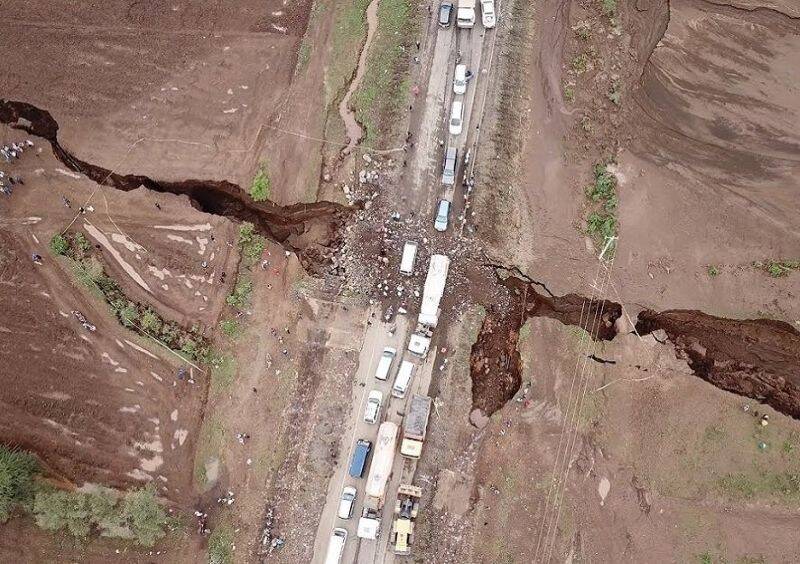
Nation/YouTubeThe split that formed in Kenya, most likely the result of erosion.
Initially, this fissure was thought to be a manifestation of tectonic activity associated with the East African Rift System — which does indeed extend through Kenya — but after further investigation this was called into question.
As Lucía Pérez Díaz of the Royal Holloway University of London wrote for The Conversation in 2018, geologists came to believe that the fissure was an erosional gully. It was likely created as a result of heavy rainfall and erosion.
The region had experienced intense downpours, which led to the saturation and weakening of volcanic soils. This caused the ground to collapse, thus resulting in the dramatic fissure. While the East African Rift Valley is an area of active tectonics, experts concluded that this particular event may be more closely linked to surface processes exacerbated by unusual weather patterns. That said, the fissure is located along the East African Rift.
Regardless of its root cause, this second event drew even more attention to the splitting of Africa. While the rift doesn’t seem to be suddenly creating new tears in the Earth’s crust at a rapid pace, the divide is slowly but surely taking place. As such, it has remained a focus of scientific study, and in August 2024, a new study published in the journal Frontiers in Earth Science explored what this split could mean for the future.
What Is Causing Africa To Split — And What Does That Mean For The Future?
Essentially, geologists have concluded that the surface fissures in Africa are directly linked to the East African Rift System, a 4,000-mile-long geological feature where the Arabian plate and two parts of the African plate, the Nubian and Somali plates, are slowly pulling away from each other.
According to the 2024 study, heat from the asthenosphere — the hotter, weaker upper part of Earth’s mantle — causes the overlying crust to expand and fracture, leading to the formation of rifts. The mechanics of this rifting involve the lithosphere being subjected to extensional forces, causing it to thin and break apart. Magma from the mantle rises to fill these gaps, leading to volcanic activity and the creation of new crust.
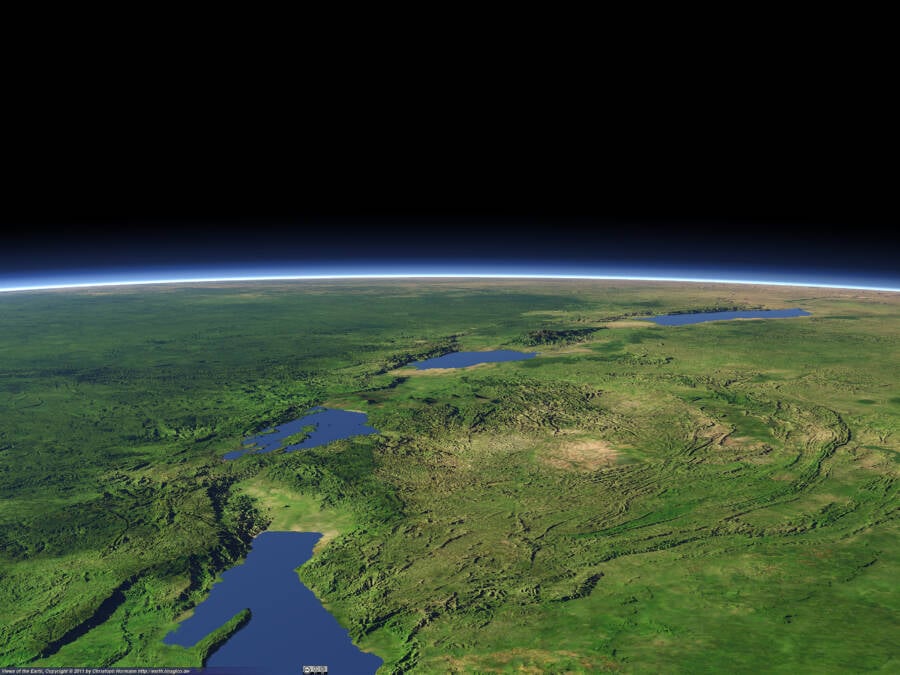
Wikimedia CommonsA rendering of the Albertine Rift, the western branch of the East African Rift.
The boundary between the Somali Plane and the Nubian Plate is where the rifting is most evident today, and, as the plates continue to diverge, it’s anticipated that the rift will gradually widen. At some point, oceanic waters will flood in and create a new sea, effectively separating eastern Africa from the rest of the continent, and creating a new, sixth ocean.
However, this is a process that will take place over millions of years, so while the groundwork is being laid now, the final result of Africa splitting is far beyond our lifetimes. That said, recent research has shown that the process is happening more rapidly than previously thought.
Speaking with the Daily Mail in January 2025, researcher Ken Macdonald, of the University of California, Santa Barbara, said this process could be completed in just one to five million years. Still well beyond the scope of human life, but much sooner than previous predictions.
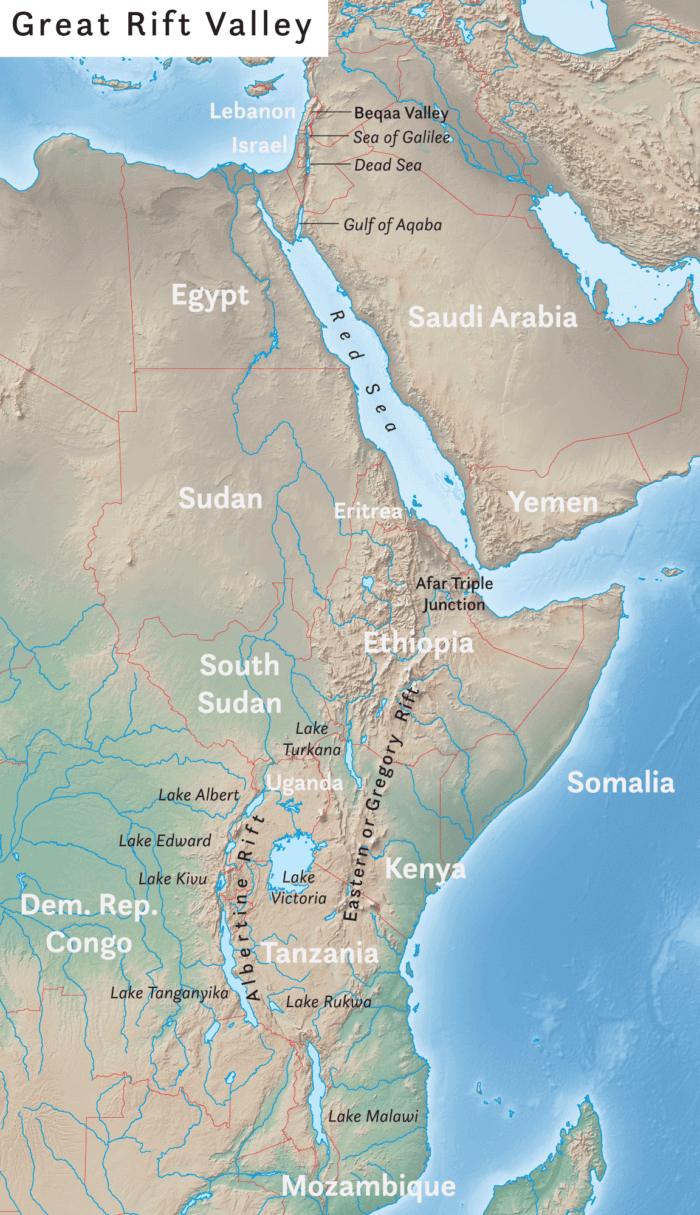
Wikimedia CommonsA map of the Great Rift Valley.
“In the human life scale, you won’t be seeing many changes,” Macdonald said. “You’ll be feeling earthquakes, you’ll be seeing volcanoes erupt, but you won’t see the ocean intrude in our lifetimes.”
As the plates continue to move further and further apart, new cracks will likely form along the Great Rift Valley. While the end result — East Africa becoming a new continent — may be millions of years away, the effects could still be felt in the near future, particularly due to volcanic activity.
Perhaps humanity will survive long enough to see this new African continent form, or perhaps it won’t. Either way, there is no stopping the process happening beneath our very feet.
After learning about how Africa is splitting apart, check out these amazing photos of Earth from space. Or, learn all about the volcanic eruption of Mount Vesuvius and how it destroyed the Roman cities of Pompeii and Herculanem.





